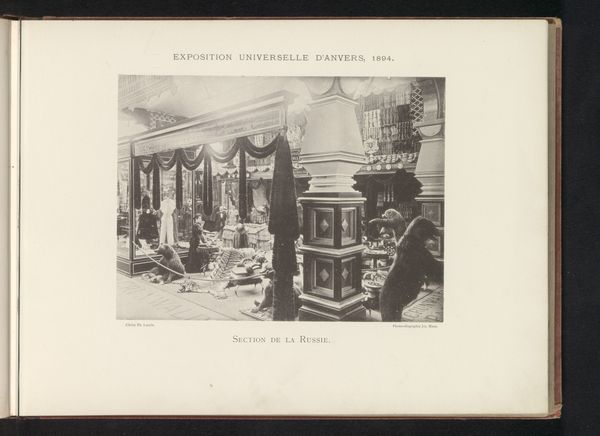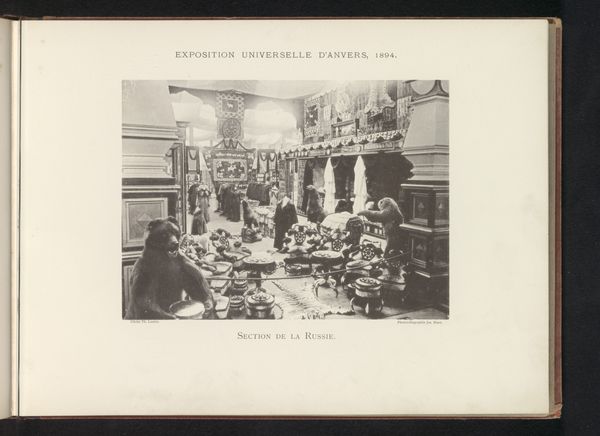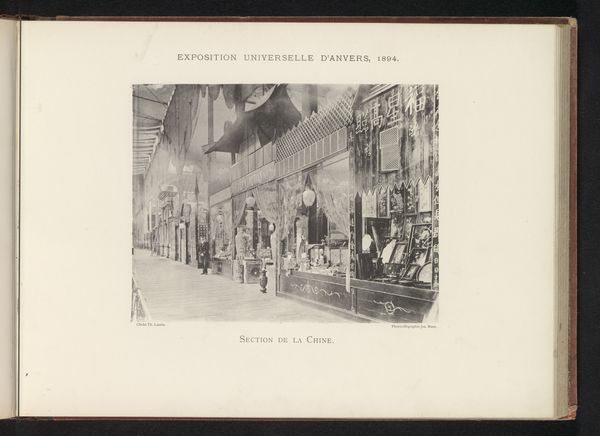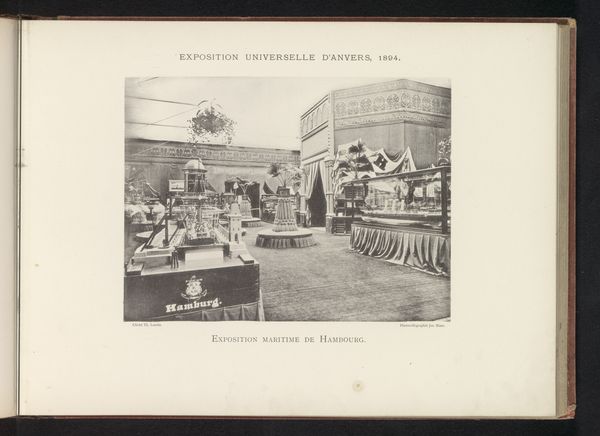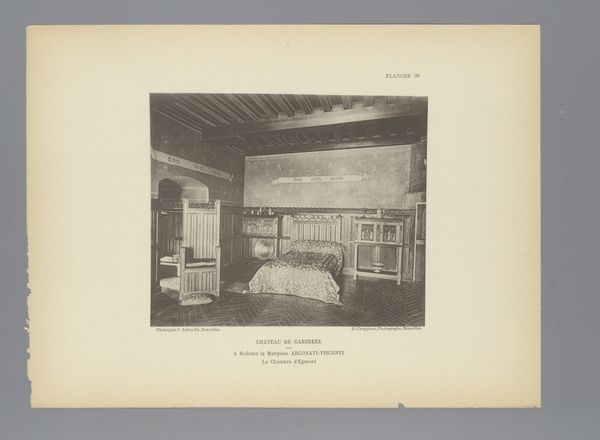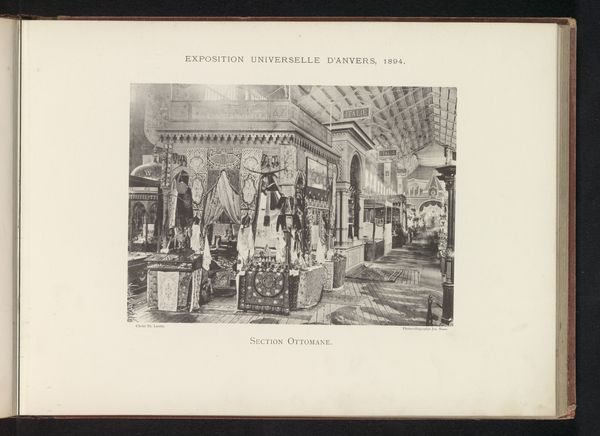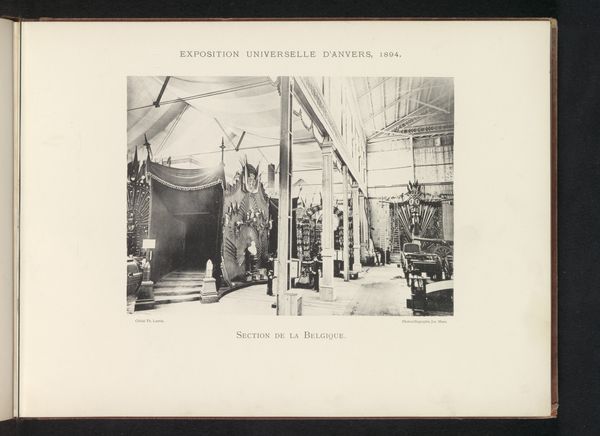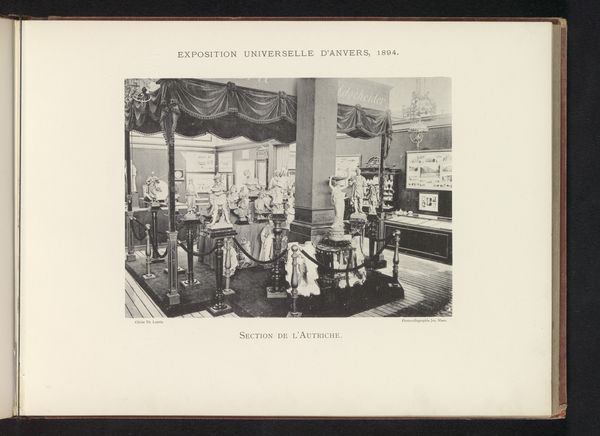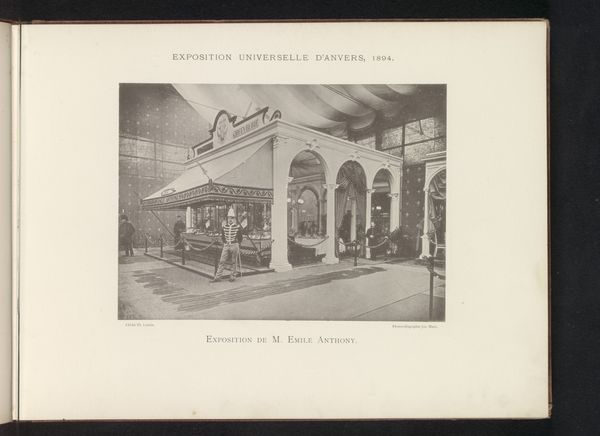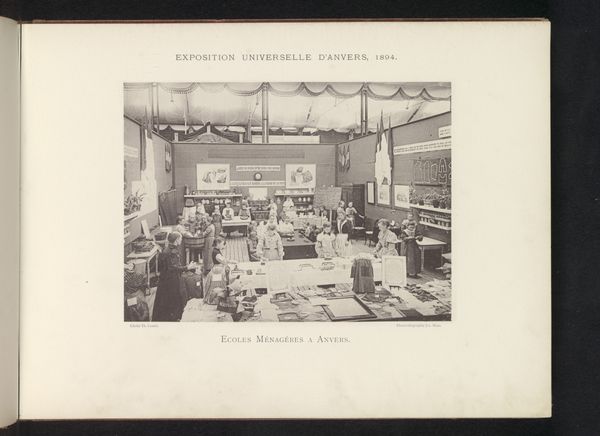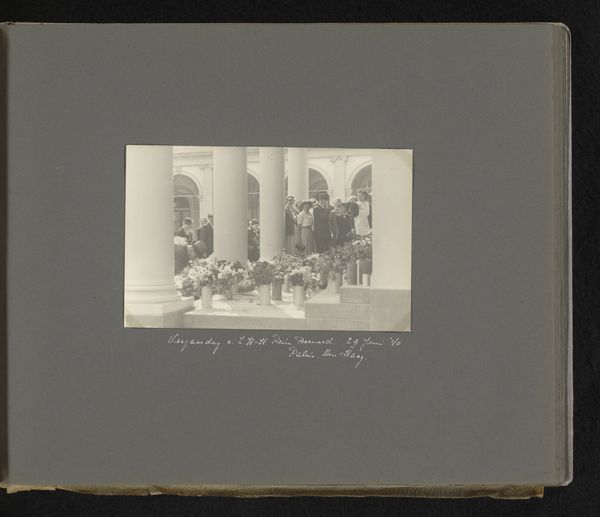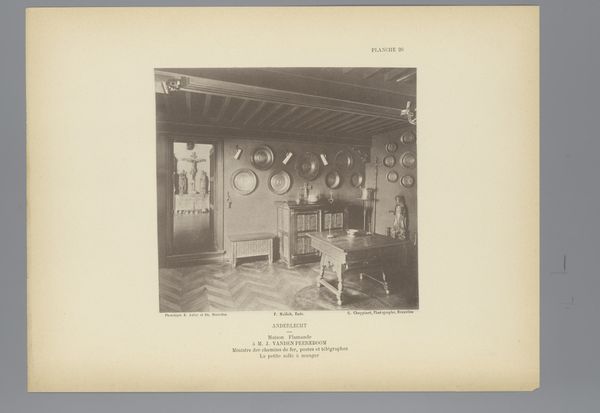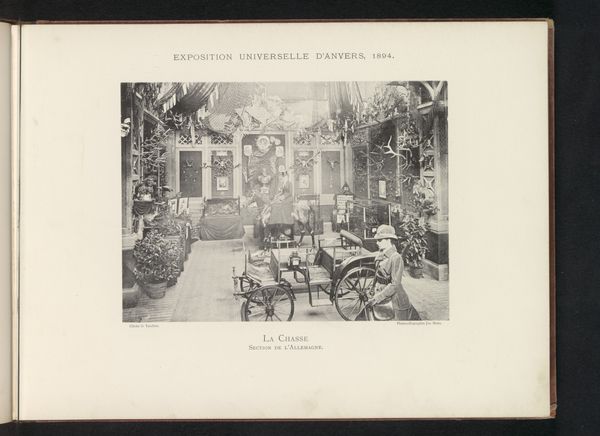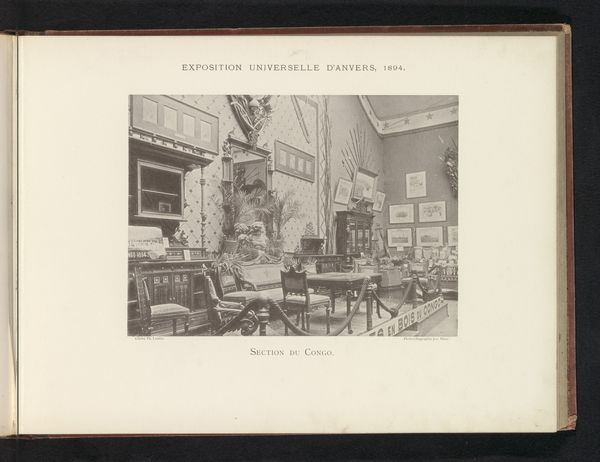
Dimensions: height 161 mm, width 219 mm
Copyright: Rijks Museum: Open Domain
Curator: Here we have "Tiroler chalet in de wereldtentoonstelling te Antwerpen," or "Tyrolean chalet at the world exhibition in Antwerp," a gelatin silver print by Th. Lantin, taken in 1894. Editor: It's a captivating scene, somewhat theatrical even. The textures of the chalet's logs and the rough-hewn stones at its base are striking. I immediately notice the artifice involved; it’s a representation trying very hard to sell an experience. Curator: Precisely. This photograph documents a specific moment within a World's Fair. We see how nations were marketing themselves, and essentially, their cultures. Think of it as a very early form of nation branding. Editor: That’s apparent. Consider the labor involved in transporting and assembling these materials –the logs, stones, perhaps even soil to complete the illusion— all to construct what amounts to a stage set. Was this about representing the reality of Tyrol, or selling an idealized, marketable version of it? Curator: A potent question! These displays weren't intended as documentary. They aimed to conjure romantic notions about the represented locale. This romanticism provided a crucial narrative about a cultural experience. Editor: And consider how this image reproduces, then disseminates this ideal further, almost commodifying the Tyrol experience for viewers who could never hope to visit. It’s about access, but more about aspiration. This form of photographic image-making served to shape perceptions about culture and place, which had ramifications on society. Curator: It absolutely did. The photograph's role in constructing national identities can’t be understated. Through events like these and images like this, ordinary people were brought closer to those regions via photography, and given a constructed context to appreciate it. Editor: And with the careful curation and construction apparent in this work, you can feel the world coming together to display craft and labor as nationalistic value. There's an attempt to elevate "folk" craft to the level of high art, using photography as evidence. Curator: Yes, it shows how photography was used in the era, in order to display different aspects of human innovation for educational or cultural advancement to the world. Editor: An incredibly illuminating document, far more about the construction of ideas than just documentation of a building.
Comments
No comments
Be the first to comment and join the conversation on the ultimate creative platform.
